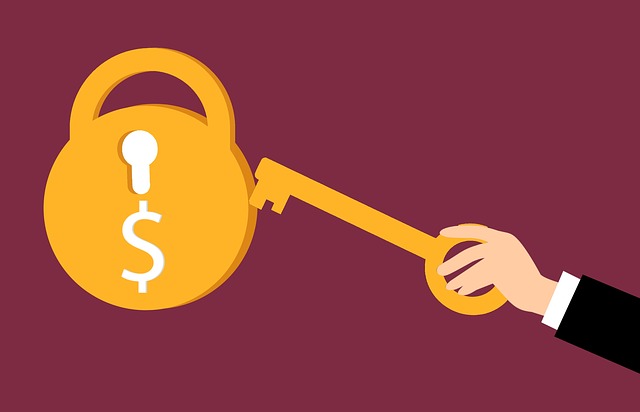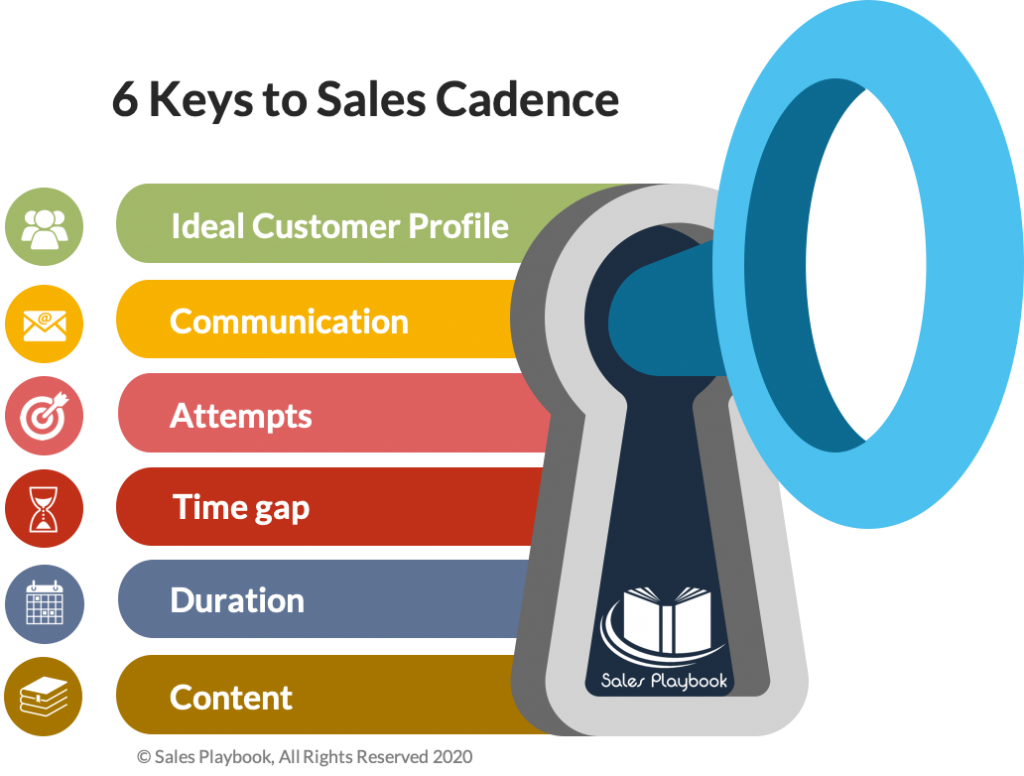
Finding a successful sales cadence, also referred to as sales sequence, for individual businesses is a trial and error process. What works for one company may not work for another. Having a framework for creating sales cadences is important and then A/B testing each one to measure its success should be done. Once you have a successful cadence include this into your company’s Sales Playbook so that the whole sales team has access to this and new hires can learn best practices.
There are six key processes to creating a strong sales cadence, making sure all the boxes are ticked is imperative to the success of your sequences.

1. Ideal Customer Profile and Buyer Persona
When creating a sales cadence you will want to first decide who you are targeting. The ideal customer profile and buyer personas should be easy to find in your company’s Sales Playbook. These will clarify who the prospects are, their industry and how to reach out to them, etc.
The important of choosing the ideal customer profile first is that your cadence will typically vary based on market size, industry and so on. If you are targeting a C-suite persona for example, then your cadence is more likely to be hyper-personalised through written communication and phone calls might be less frequent. Directors, managers and others will have an equal number including social channels and video messages but phone calls will generally be the preferred activity.
2. Communication
After you have chosen your preferred prospect, the next step is to decide how you are going to communicate. The usual ways to do this are:
- Phone calls
- Voicemails
- Emails
- Text messages
- Video messages
- Social channels
A complete sales cadence would typically include at least three of these, although depending on the profile you have decided to contact it could be all of them or less. When you A/B test each of your cadences you will start to develop preferred communication methods for each ideal customer profile.
3. Attempts
When deciding how many attempts or touchpoints will be included in your cadence you should also decide when these touchpoints will be made. For example, prospects may be travelling to work between 8am to 9am, so a phone call at this time may not be ideal and sending an email early morning or late evening may just get buried in there inbox, so deciding to send a text message or attempt to make contact through social channels at this time may be a preferred choice.
Deciding how many attempts to include in your sales sequence is really a personal choice unless your company has tried and tested cadences for their business, which will be in your company’s Sales Playbook. If no cadences are currently provided by your company, then this will be a trial and error experience. There are so called experts that say sales cadences should be between eight to ten touchpoints and that it takes an average of seven touchpoints to get a buyer’s attention. This will however depend on multiple factors, such as size of market, industry, specific verticals, product and service etc, so it’s best to start with regular contact and work your way from there based on success.
4. Time Gap
How often you connect or attempt to contact to your prospect depends on the activity channels. If you are calling and the prospect doesn’t answer and you don’t leave a voicemail message then the prospect will never know that contact was attempted, so in theory you could call all day every day until contact is established. However if you’re sending written communication or video messages then you will need to wait a day or possible two between touchpoints so that you do not over express your interest and scare the prospect away.
Another trial and error experience here, but my recommendation would be to add in your written communication and video messages first, plus phone calls where you will leave voicemail messages and then fill in the gaps with phone call attempts.
5. Duration
This is how long your cadence will last, from first to last touch. These are typically two or four weeks in duration.
Sequence duration will depend on the interest shown by the prospect you’re contacting. For example, if the prospect has opened emails and clicked on links, connected instead of blocking you on LinkedIn then a longer cadence could be used. If you start with a shorter cadence and then see this interest from a prospect you can always move them to a longer cadence. Similarly, if a prospect is showing interest in your written communication, but not returning your voicemail messages, you can add them to a cadence with less voicemail touches and more social or email..
This like the others is also a trial and error process.
6. Content
The most important part of any cadence is the content you provide. If this does not peak the prospects interest or resonate with them in some way the rest of the work you put into your cadence is really a waste of time.
Make sure you understand the prospect’s business, what challenges their business would typically face, what challenges the prospect would face in the role, is there any recent sales triggers, such as expanding their organisation, new products or service, change of roles, etc. The research you do here will determine the success of your cadence.
Personalise your message. I have never been a fan of automated messaging, but unlike others I am happy to use workable templates that have shown high success rates. These just need to have time spent on them to personalise your approach and not just sending the same ones out to every prospect in your sales pipeline. Be as relevant as you can. Set up google alerts or similar newsfeeds to stay on top of what’s happening with your prospects, this way your message will resonate with your prospect at that time and you may even supply them with industry insights they didn’t know yet.
Where possible try to speak the same language as your prospects. This can be difficult, but using certain terms or acronyms can go a long way in building rapport with your messaging. When you speak to them on the phone or leave a voicemail message they will relate more to the words you use if it pertains to them. Making sure you speak about them or their business and not about you and yours is imperative when reaching out.
Keep your written communication short, if you write an essay it is highly likely the prospect will not want to read the message in full or at all. Keeping the message short, friendly, directly about their challenges and examples of how you have worked with or helped similar companies is important. Don’t be scared to name drop one of their competitors, this can be a really strong approach as companies are typically always interested in their competitors and what they are doing to improve their business.
Finally, when writing emails make sure your subject line is clear and meaningful, and don’t be afraid to try different ones. A prospect’s inbox, which is probably growing by the minute, will need a message that stands out to grab their attention. Think about this: your prospects are looking for a reason to delete your email instead of a reason to open them, so don’t go down the generic subject route and give them an easy excuse.
To recap:
- Do your research
- Resonate with your prospects
- Personalise your messaging
- Speak the same language
- Keep written messaging short
- Be creative with your subject lines
In conclusion
Sales cadences are important to keep your prospect outreach structured and continuous. Relevant content will enable you to achieve a high rate of engagement and in turn will improve conversation rates and make hitting or exceeding your target much more frequent. Stay focused, continually A/B test your sequences and make sure you action your activities as and when they appear.
This cadence framework and examples of successful sales sequences should be included in your company’s Sales Playbook.
My article Creating a Strong Sales Cadence can give you examples of different sales sequences.
“The greatest mistake you can make in sales (or in life) is continually fearing that you’ll make one”
Thanks for reading. If you enjoyed this article please like below and share on your social channels.


